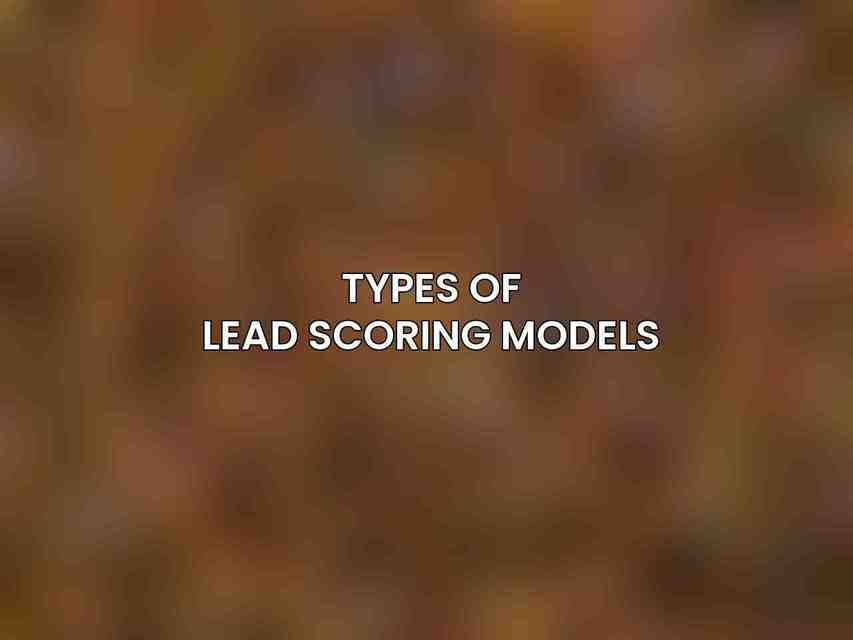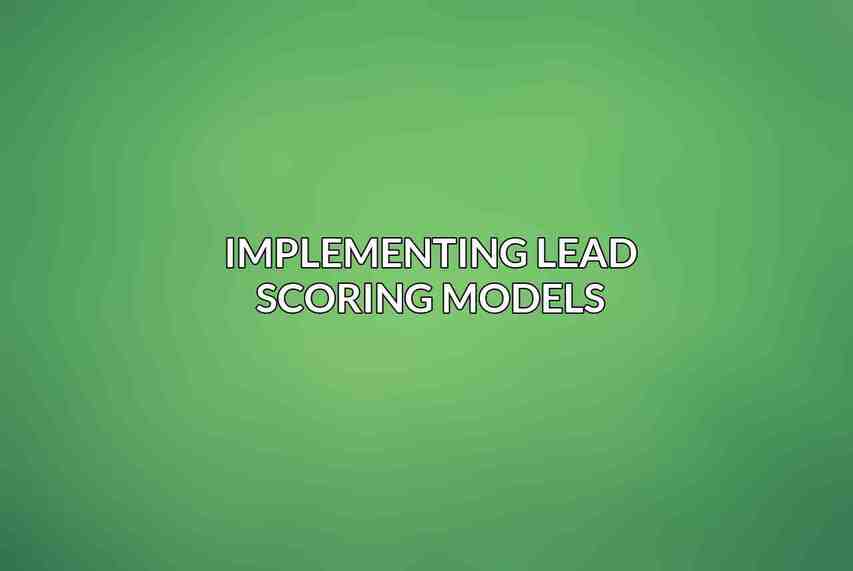Lead scoring plays a crucial role in efficiently identifying the most promising leads for businesses. Lead scoring involves assigning values to leads based on various criteria to determine their sales-readiness. It helps prioritize leads, allowing sales teams to focus their efforts more effectively. The benefits of lead scoring are numerous, including increased sales efficiency, improved conversion rates, and better alignment between sales and marketing teams.
Types of Lead Scoring Models

There are several types of lead scoring models that businesses can leverage to qualify leads effectively: Dive deeper into Effective Lead Nurturing Strategies to Boost Your Conversions
| Types of Lead Scoring Models | Description |
|---|---|
| Numerical Scoring | Involves assigning numerical values to different criteria. |
| Categorical Scoring | Involves placing leads into predefined categories. |
| Hybrid Models | Combine elements of both numerical and categorical scoring. |
Numerical scoring can further be divided into point-based systems where scores are given based on specific actions or attributes, and weighted scoring where different criteria are assigned different levels of importance. On the other hand, categorical scoring includes tiered systems where leads are categorized into different levels of readiness and qualitative scoring based on subjective assessments.
Selecting the Right Lead Scoring Model
When selecting the right lead scoring model, businesses must consider various factors to ensure it aligns with their objectives and processes. Numerical models offer granular insights and customization but can be complex to implement, while categorical models are simpler but may lack precision. Hybrid models aim to strike a balance between flexibility and accuracy.
Factors to Consider
- Business Goals and Objectives: The lead scoring model should align with the overall goals of the business.
- Buyer Persona and Journey: Understanding the buying journey and behavior of leads is crucial in selecting relevant scoring criteria.
- Data Availability and Quality: The availability of data and its accuracy directly impact the effectiveness of the lead scoring model.
When considering the Pros and Cons of different models:
- Numerical models offer flexibility but can be time-consuming.
- Categorical models are easier to implement but may lack precision.
- Hybrid models provide a middle ground between the two.
Implementing Lead Scoring Models

To implement lead scoring models effectively, a systematic approach is required, involving data collection, automation, and constant optimization.
Data Collection and Analysis
- Identifying Relevant Lead Attributes: Determine which factors indicate lead quality and sales readiness.
- Assigning Points or Categories: Establish a mechanism to assign scores or categories to leads based on predefined criteria.
- Setting Thresholds: Define the point at which a lead is considered sales-ready and worth passing to the sales team.
Automation and Integration are essential for seamless lead scoring processes:
- Using Marketing Automation Platforms: Automate the scoring process to handle large volumes of leads efficiently.
- Integrating Lead Scoring with CRM: Ensure integration with Customer Relationship Management (CRM) systems for a streamlined lead handoff process.
Monitoring and Optimization play a vital role in the ongoing success of lead scoring:
- Tracking Lead Conversion Rates: Monitor how leads move through the sales funnel based on their scores.
- Adjusting Scoring Criteria: Regularly review and optimize scoring criteria based on lead behavior and conversion rates.
Continue reading the article to explore Case Studies and Examples of successful lead scoring implementations in various industries and Best Practices to enhance your lead scoring strategies.
Frequently Asked Questions
What is lead scoring?
Lead scoring is a methodology used by sales and marketing teams to rank prospects based on their likelihood to become customers. It helps prioritize leads and focus efforts on those most likely to convert.
Why is lead scoring important?
Lead scoring is important because it allows companies to effectively prioritize and target leads, leading to increased efficiency in the sales process. It ensures that sales teams are focusing their efforts on leads that are most likely to convert, ultimately improving conversion rates and ROI.
How can companies implement lead scoring models?
Companies can implement lead scoring models by first identifying key criteria that impact the likelihood of conversion, such as demographic information, behavior, and engagement with marketing materials. They can then assign values to these criteria and create a scoring system to rank leads accordingly.
What are the benefits of implementing lead scoring models?
Implementing lead scoring models can lead to improved lead qualification, increased sales productivity, better alignment between sales and marketing teams, and ultimately higher conversion rates and revenue. It also allows companies to better understand their target audience and optimize their marketing strategies.
What are some common challenges when implementing lead scoring models?
Some common challenges when implementing lead scoring models include obtaining accurate and up-to-date data, defining clear lead scoring criteria, ensuring alignment between sales and marketing teams, and continuously monitoring and optimizing the lead scoring model to adapt to changing market conditions.

